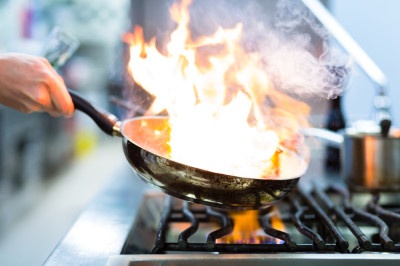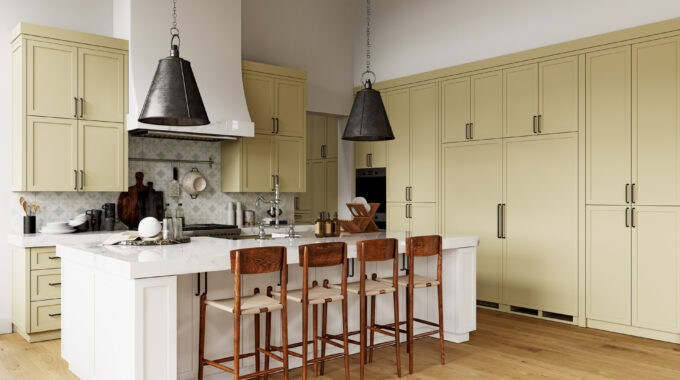The Stove Showdown: Electric vs. Gas
When comparing gas and electric stoves, whether it’s BTUs, induction technology, hot surfaces or open flames, there’s always a fierce debate. From the novice to the professional, everyone has an opinion. Available for every kitchen design, we’ve compared the pros and cons of each to give you an idea of what would best suit your cooking needs.

The Gas Stove
Long the favorite of the professional chef, a big powerful gas range has always been the stove of choice. Gas cooking allows speed and accuracy that an electric just can’t deliver. The room doesn’t heat up like with the electric type and once turned off, the heat is gone. Gas heat can surround the pan, not just heat up the bottom and it’s easy to gauge and adjust the flame, giving you more even cooking. Gas is also less expensive to use, is widely available and burns clean. In the event of a power outage, you can still cook.
The downside? It is generally more expensive to purchase and install, harder to clean and according to some, gas stoves are not as pretty – although this is, of course, a matter of taste. In some cases, gas can also be more dangerous than electric: if you have small children around who can push a chair over to the hob and climb up, the open flame could be a real danger.
The Electric Stove
First and foremost, purchasing the electric hob is less expensive. Easy to install, you simply plug it in and turn the knob. The smooth surface has a sleek look, is easier to clean and offers more functions than gas, such as a warming plate. An electric oven provides a dry environment for roasting and distributes heat evenly while baking. It also has no open flame. On the other hand, cooking on an electric stove is difficult to get used to. It heats up slow, it may be difficult to control the temperature and the surface stays hot long after you finish cooking. It is also useless if the power goes out.
What about Induction?
If gas is unavailable and the basic electric won’t do, induction cooking is a great alternative. Once only popular in Europe, it is only recently that mainstream suppliers began selling induction ranges. Powerful, high speed and energy efficient, it gives you the control of a gas burner and boils water in a flash, saving you time. The surface heats only by contact with the pot by a magnetic field with amazing energy efficiency.
If you have concerns about small children and burns, induction technology doesn’t generate heat; it induces the pot, making it safer than traditional electric stoves as it cools quickly once the pot is removed from the surface. Major drawbacks are that it only works with pots and pans made with magnetic materials, it doesn’t work in a power outage and heats so fast it is difficult to control for those unfamiliar; it may mean having to learn to cook all over again.
Dual Fuel
To really customize, dual fuel range tops offer the best of both worlds. Gas cooking with a convection oven offers control and convenience with options like infrared char broiler and infrared griddles for grilling and cooking everything from pancakes to burgers.
Making the Decision
When comparison shopping, consider all the factors when making a decision. If cooking is your passion or if energy efficiency is the first consideration, gas might be the choice for you. If open flames and hot surfaces are of concern with young children, induction technology might be the way to go. The simplicity and ease of the electric stove is a great consideration for the average household. Whatever your decision or design preference, there’s a stove that’s perfect for you!








